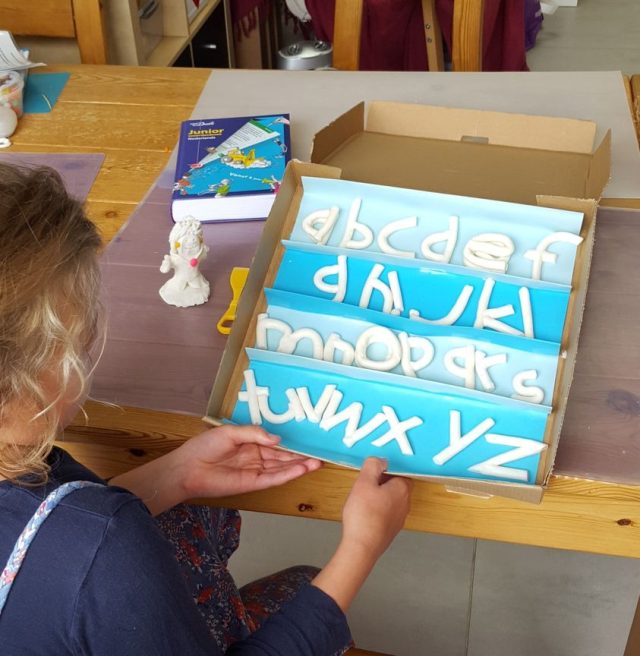The “Science of Reading” and Davis Methods
New Label, Old Ideas

When something is backed by science, it implies “proof“. There are various ways this is done but in the areas of social science, evidence-based methods are used .andhence the term “Science of Reading” has emerged. The “Science of Reading” aka phonics (similar to the Structured Reading Approach) and its cousins is based upon research conducted over the last five decades across the world, and it is derived from thousands of studies conducted in multiple languages. It is believed that phonics, phonemic awareness, vocabulary, fluency, and comprehension are the main ingredients to becoming a successful reader.
Heavy phonics as seen in the “Science of Reading” follows a bottom-up approach to decipher words, following a formula to decode words, and once successful, it is believed comprehension will follow. This contradicts the present “Balanced Literacy Approach”, which came in the 1990s to solve poor literacy scores. It employs the theory that students learn to read by reading and through exposure to rich literature. This approach includes “embedded phonics” which involves instruction in sound-symbol relationships built into the reading experiences. It can lend itself to guessing a word using contextual clues. For some, balanced literacy strikes a balance between whole language and phonics – the best of both worlds including the love of reading.
But the proof is in the pudding and there seems to be a general agreement, we are not as good as we think. According to the Conference Board of Canada, Canada earned a “C” grade on literacy skills in the latest international comparison study.1 This is where literacy becomes confusing. At first glance, when you google literacy rate in Canada and the United States, it shows a 99 percent literacy rate. But when you break it down into categories such as comprehension and writing as suggested by literacy’s basic definition, we get a different picture. According to Statistics Canada, 49% of the adult population scored below high-school literacy levels starting with Level 1 where 22% of adults identify themselves as people who cannot read to Level 4, while only 20% of adult Canadians possess strong literacy skills.2 America has similar conflicting reports. Nationwide, on average, 79% of U.S. adults were literate in 2022, but 54% of adults had a literacy level below sixth-grade level.3
While lower scores can be attributed to various circumstances such as English being a second language, poor living conditions, or lack of early intervention, the overall performance is low considering education is readily available in the 2 countries. It begs questioning of why we are at odds with literacy. First, the English language is difficult and does not always support the rules of phonics unlike many of the European languages. This is where a “Balanced Reading” approach makes sense, as generally dyslexics don’t think with words and sounds and alternative strategies are provided in this approach.
Yet we are still missing the mark and it may be because dyslexic needs are presently not being met and it is roughly estimated that 20 per cent of the population are dyslexic. That may account for some of the low literacy scores and if you believe those with dyslexia are learning able, a fresh approach to reading is needed.
For about 100 years, we have tried various approaches to reading instruction – phonics and its counterparts, whole language, and balanced learning. Yet half the population remains illiterate for one reason or the other. Placing a sticker “science” to phonetical instruction and expecting a different result is a recipe for failure. Yes, there are many who get phonics, but there are many that don’t. To force someone to use only one method to read and not acknowledge the learning difference when other methods are available seems redundant. Einstein said, “insanity is doing the same thing over and over again, expecting a different result.”
Classroom Success with Davis Learning Strategies

The Davis® Learning Strategies (DLS) was developed for the classroom and offers focusing and self-regulating tools for all children – word and picture thinkers. It acknowledges the basic learning and thought processes of a dyslexic person and at the same time provides self-management tools for all learners. The Davis Method solves the lack of picture and meaning of sight words through Symbol Mastery using clay modeling. The Picture at Punctuation Reading Exercises enhance comprehension, while Spell Reading and Sweep, Sweep Spell encourage word recognition. Those who are word thinkers can still benefit from these exercises and they can supplement any regular reading program. An added bonus to the Davis Learning Strategies is the self-regulation set of techniques learned over time. These self-management skills seem to be urgent considering recent reports suggesting teachers are now afraid of students.4 5
Often the word recognition exercises are mistaken as a whole word approach but this is not the case. They are designed to train the “picture thinker’s “ eye to scan a word as a sequence of letters that make a sound. But previous to this, the child has received a focusing method, as described in the book, The Gift of Dyslexia, by Ronald D. Davis, which gives the visual-spatial kinesthetic learner control over their natural thinking style when addressing 2 dimensional symbols. So when the child approaches the word recognition reading exercises, they have resolved confusions over letters and have focusing tools so that input of the word is correct.

But does it work? Early research indicates yes. In 2001 Sharon Pfeiffer, under the guidance of Dr. T.F McLaughlin of Gonzaga University conducted a 3-year Davis classroom trial in multiple California public schools K-2 grade students. Findings demonstrated that the Davis groups scored significantly higher on tests of sight word recognition and students needed no further intervention or special education. It also revealed that gifted and talented referrals were significantly higher in the Davis groups indicating the strategies benefitted all children.6 Basically, behavioral issues dropped and students began to show improvements in emotional stability, socializing skills, and confidence levels. Furthermore, it can fit into a regular class language program and students seem to gravitate toward the strategy that works for them best.
A more recent study in 10 different schools in New Zealand focused upon the question of the impact this intervention had on the reading achievement of targeted year 2-4 children who are/were working below curriculum expectations. It was reported all targeted students who participated made gains with their reading and teachers also reported a positive impact on students’ ability to manage anxiety, frustration, or anger. The Waihao Downs School in New Zealand in their report also found the focusing strategies improved behavior on the playground and overall anxiety in learning.7
Over the last two decades, Davis methods have been the direct subject of more than two dozen research journal articles, conference papers, and academic dissertations from researchers in countries such as South Africa, Australia, Malaysia, India, and Iran, as well as the U.S. Details of this research are posted on the www.dyslexia.com site. Our methods are different, designed by an adult dyslexic male who wanted to get to the cause of the disabling side of dyslexia. Our research is recent, but let’s not discard it as history shows that traditional methods are not reaching 100 percent literacy if it follows the rules of true literacy – word identification, comprehension, and writing. If we can address the unmet needs of 20 percent of the student population, overall literacy could improve! A new science is emerging!
- Adult Literacy Rate – Low-Level Skills, The Conference Board of Canada ↩︎
- Patricia G. Bailey, J.j. Tuinman, Stan Jones, Literacy, (2012-2013) ↩︎
- Steven Zauderer, 39 Reading Statistics and Facts You Should Know and and 55 US Literacy Statistics: Literacy Rate, Average Reading Level, (June 30, 2023) ↩︎
- Lyba Mansoor, New study finds that teachers are actually more scared of students (September 11, 2018). ↩︎
- ‘Alarming’ new survey finds nearly 80% of Ontario elementary teachers experience school violence (May 15, 2023) Toronto Star. ↩︎
- Sharon Pfeiffer, et al. The Effect of the Davis Learning Strategies on First Grade Word Recognition and Subsequent Special Education Referrals. Reading Improvement, Vol. 38, No. 2, Summer 2001. ↩︎
- Davis Learning Strategies in New Zealand Schools Action Research Inquiry 2018 ↩︎









